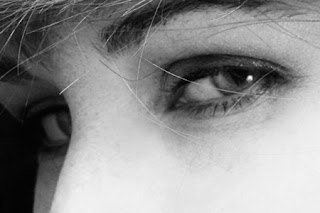By Denny Tang Nov 11, 2011
Photoshop Tutorials - Photo Effects
Learn how to use Photoshop to simulate natural film grain on digital
photographs. This beginner Photoshop tutorial will show you how to add
natural looking noise using a non-destructive process. If you use
Photoshop CS3, you will also learn how to add this effect using Smart
Filters.
Step 1: Open an image into Photoshop
To open an image, choose
File> Open. Browse for the image file and click OK.
Step 2: Create a new layer
First, we're going to
create a new layer for the film grain instead of working directly on the
photo. By using a new layer, we're practicing what is called
non-destructive editing. Non-destructive editing means that all effects
are on their own seperate layers so that they can be edited or removed
anytime without undoing a bunch of steps.
To create a new layer, click
on the "New Layer" icon in the layers pallet or go to Layer> New
Layer. Rename the new layer from Layer 1 to Film Grain.
To rename a layer, simply double-click on the layer name in the Layers
pallet and edit.
Step 3: Fill the layer with 50% gray
We'll begin
working on this layer by adding a 50% gray color.
To do this, press
Shift+Backspace or choose to Edit> Fill. Click on the Use
drop down menu, select 50% gray and click OK. The Film Grain
layer should now be filled with a 50% gray color.
Step 4: Set the blending mode to Overlay
Now change
the blending mode of the current layer to Overlay. You should now see
the layer below in the document window. Many of the blending modes
including Overlay will treat a neutral 50% gray as a transparent color.
You can also use a 50% gray layer to add different filter effects
without editing the original Background layer.
If you are
using Photoshop CS3, you can use non-destructive Smart Filters
by converting this layer into a Smart Object. To do this,
right mouse click on the layer and select Convert to Smart Object
or go to Layer> Smart Objects> Convert to Smart Object.
The layer
thumbnail should now have a small icon inside it to indicate that it is
a smart object.
Step 5: Add noise
To add noise, choose Filter>
Noise> Add Noise. In the Add Noise filter, set the amount
to 400% and click OK. If you are working with a black-and-white image,
checkmark Monochromatic to make the noise black-and-white.
Don't worry about the amount of noise added; we will adjust this setting
later.
Note: If you are working on a Smart Object with
Photoshop CS3, the filter you apply will be smart which means
that you can edit the settings anytime you want.
Step 6: Blur the noise
We added some noise, but it
looks like digital noise instead of film noise. Fixing this is easy:
just blur the noise. Choose Filter> Blur> Gaussian Blur.
Adjust
the radius to get the noise result you like and click OK.
Step 7: Adjust the intensity of the noise
The grain
should appear to be very strong; perhaps too strong for most situations.
To reduce the visibility of the film grain, simply reduce the opacity
of the Film Grain layer. If you are using Photoshop CS3, you
can double click on the Gaussian Blur Smart Filter and edit the
settings if it is not what you want.
Final Results
Original Image

Natural Film Grain Photoshop Tutorial

No comments:
Post a Comment